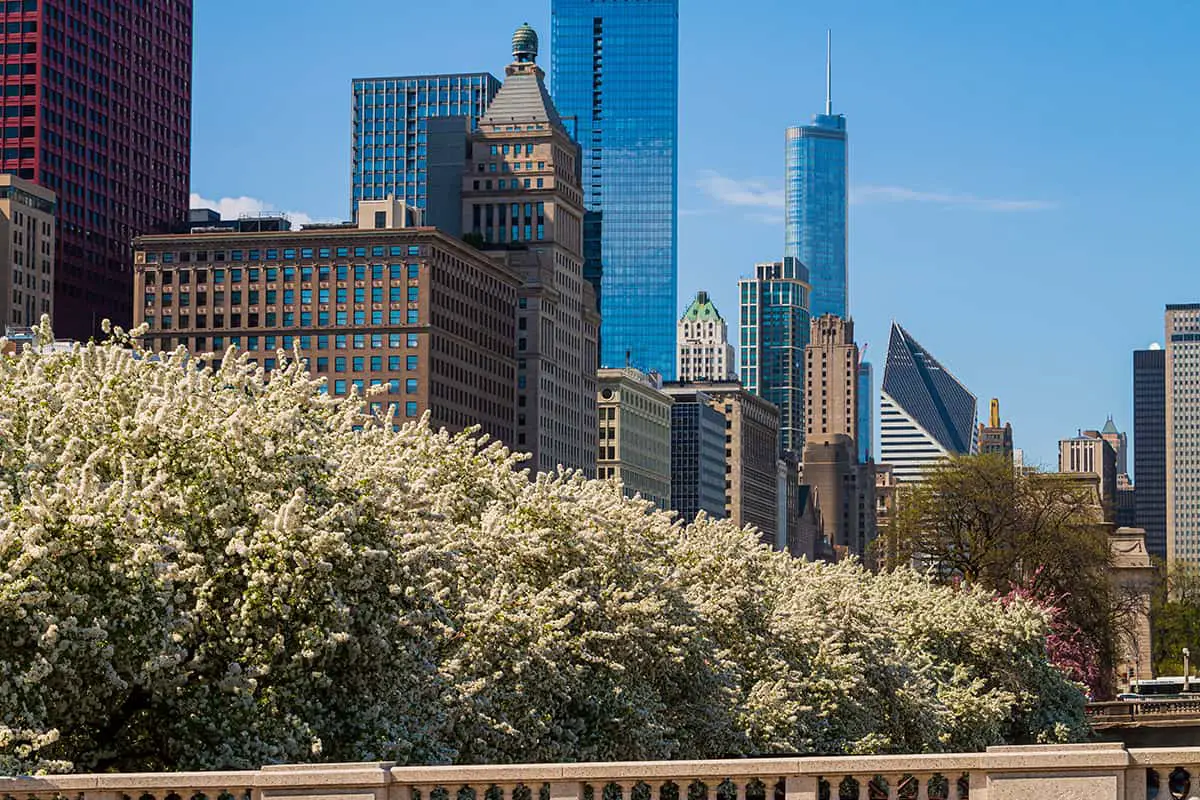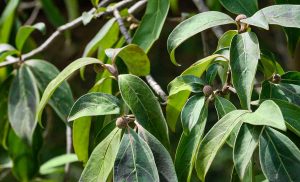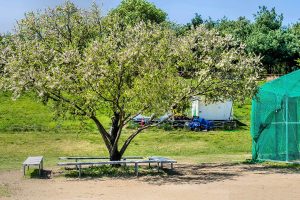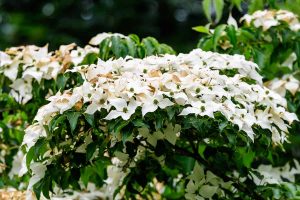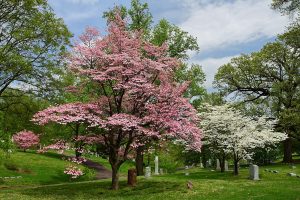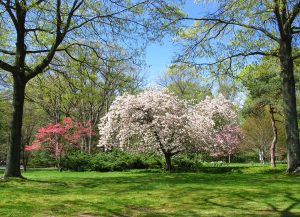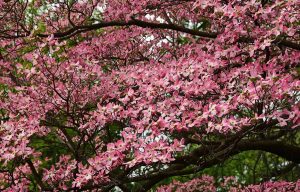The leaves of the Dogwood tree are loved for the dense canopy of shade they provide throughout summer and the spectacular display of color they put on throughout fall.
Here we look at how to identify Dogwood tree leaves, how to diagnose problems based on Dogwood tree leaves, and various other frequently asked questions about the leaves of the Dogwood tree.
Types of Dogwood Leaves and How to Identify Them
There is some variation in the types of leaves different Dogwood trees produce, which can make them tricky to identify. Typically, most Dogwood trees produce oval leaves, which come to a point at the tip, and this is known as ‘ovate’ They usually also have distinctive veining, but the number of veins and distance between each vein will vary according to the species. All Dogwood trees are deciduous, which means they lose their leaves in fall.
The leaves of these trees will fade to warmer colors before they are shed, though the color they take on can differ between types of Dogwood. The leaves of Dogwood trees are always smooth and never serrated. Sometimes they may curl up, which is a reaction to the tree being in stress.
Although this is an indicator of a problem, it is also an easy way to identify some Dogwood leaves since there are few trees that do this. Here we look at some of the most common types of Dogwood trees and explore the defining features of their leaves to help you recognize them.
Pagoda Dogwood
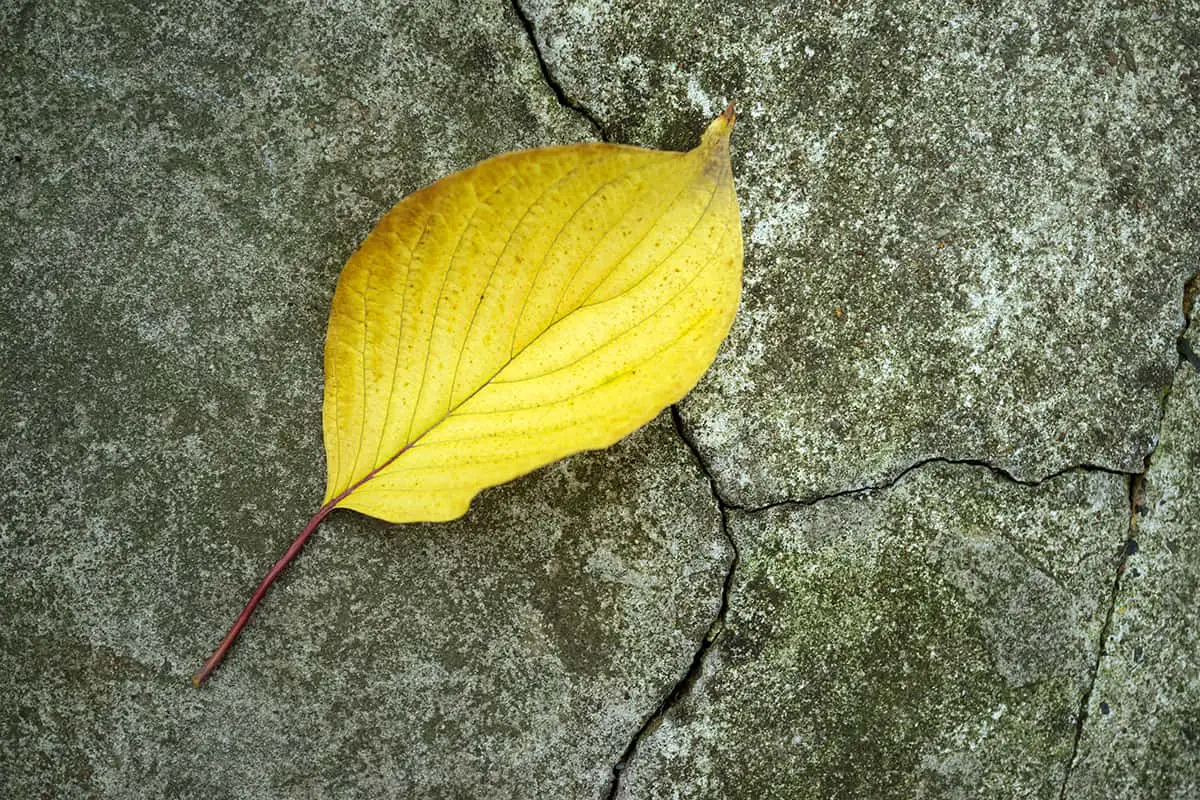
- Botanical name: Cornus alternifolia
- Common names: Pagoda Dogwood, Alternate Leaf Dogwood
- Plant family: Cornaceae
- USDA hardiness zone: 4 – 8
- Mature height: 15 to 25 feet
- Mature spread: 20 to 30 feet
The leaves of the Pagoda Dogwood tree are ovate, and they appear alternately along the stems which are purple-brown when young and mature to a deep green. Each leaf measures around 5 inches in length at full size and features alternate veins which point outwards horizontally. The leaves are green through summer and can fade to a purple-brown in winter before they are shed by the tree. Some Pagoda Dogwood leaves may also start to curl in on themselves in the fall.
Flowering Dogwood
- Botanical name: Cornus florida
- Common names: Flowering Dogwood, Common Flowering Dogwood, Eastern Flowering Dogwood
- Plant family: Cornaceae
- USDA hardiness zone: 5 – 9
- Mature height: 15 to 30 feet
- Mature spread: 15 to 30 feet
The leaves of the Flowering Dogwood tree are quite small, measuring around 3 inches in length. They are oval-shaped and appear along the branches of the tree after the flowers have bloomed.
Throughout summer, the leaves of this tree are bright, mid-green, and they take on an intense shade of red in the fall before dropping to the ground. The leaves of the Flowering Dogwood are veined, and each vein is gently curved.
Japanese Dogwood
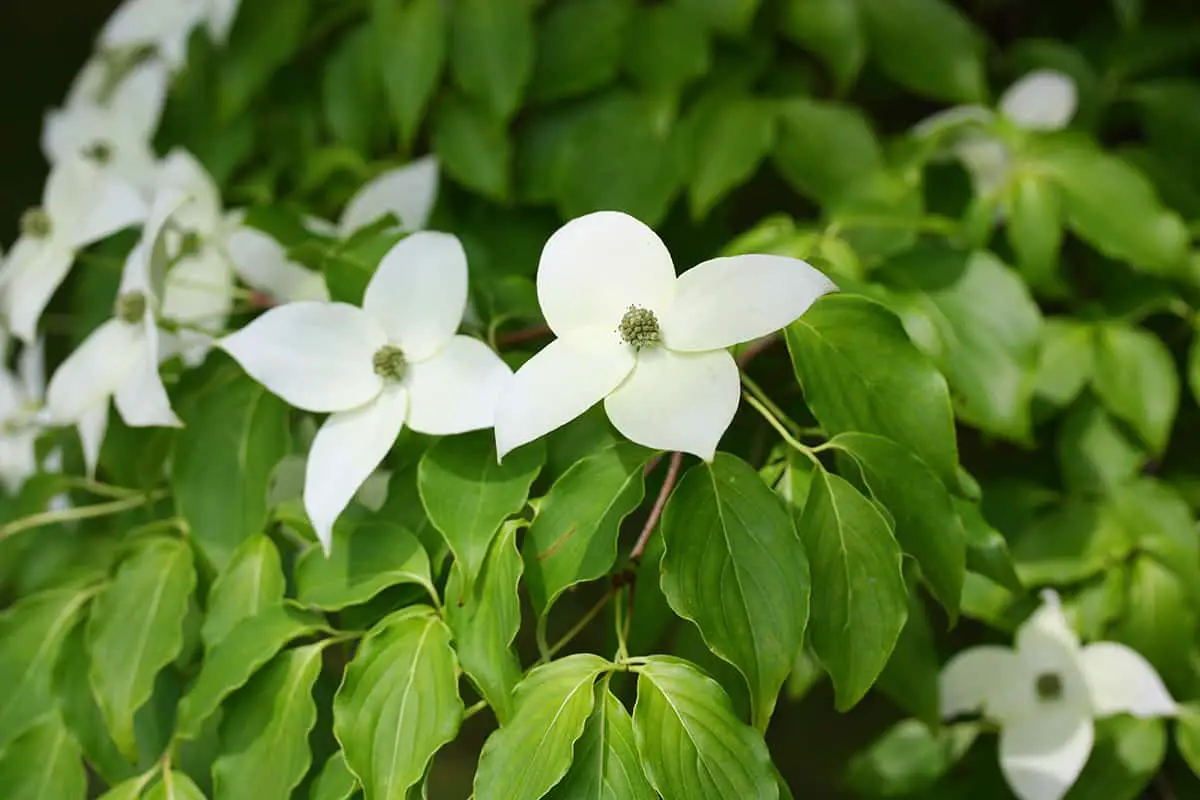
- Botanical name: Cornus kousa
- Common names: Japanese Dogwood, Japanese Flowering Dogwood, Flowering Dogwood, Kousa Dogwood, Cornus Japonica, Chinese Dogwood, Japanese Strawberry Tree
- Plant family: Cornaceae
- USDA hardiness zone: 5 – 8
- Mature height: 15 to 30 feet
- Mature spread: 15 to 30 feet
The leaves of the Japanese Dogwood tree are ovate, with closely aligned veins running to the edges of each leaf, which can result in a slightly ruffled look. The leaves are green through summer and take on shades of purple and red in the fall. These trees have lush, dense canopies made up of relatively small leaves.
Pacific Dogwood
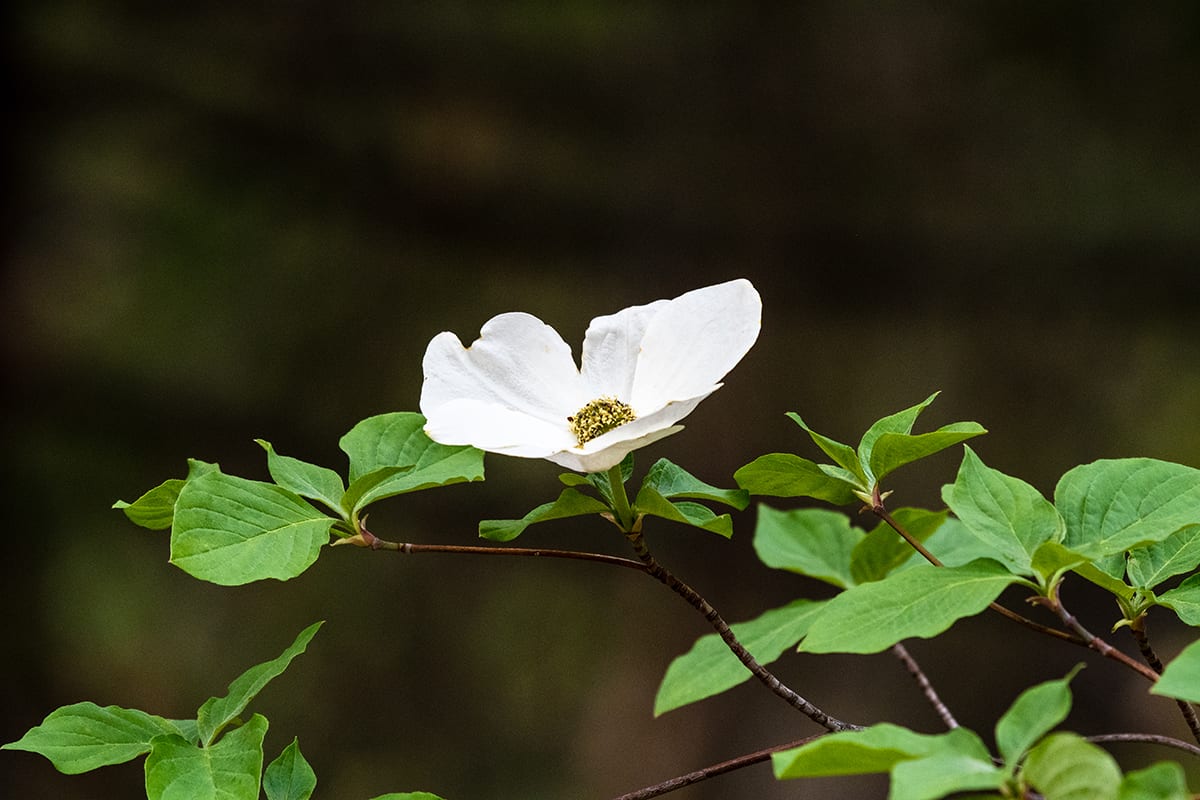
- Botanical name: Cornus nuttallii
- Common names: Pacific Flowering Dogwood, Pacific Dogwood, Mountain Dogwood
- Plant family: Cornaceae
- USDA hardiness zone: 7 – 9
- Mature height: 15 to 40 feet
- Mature spread: 10 to 25 feet
The leaves of the Pacific Dogwood tree are broadly ovate and typically measure around 5 inches in length. They form more of a heart shape compared with other types of Dogwood leaves since they come to a more narrow point and are more rounded at the top.
These leaves create a dense canopy of shade in the summer months following the arrival of the flowers. In fall, the foliage will fade to shades of red, orange, and yellow, making for a spectacularly colorful display before they drop to the ground.
Dogwood Tree Leaves FAQs
Do Dogwood Trees lose their leaves?
Dogwood trees are deciduous, which means they shed their leaves in the fall and produce an entirely new set of leaves the following spring. All Dogwood trees are deciduous, so it is perfectly normal for them to begin to drop leaves toward the latter half of the year. If they drop their leaves at other times of the year, this should be regarded as a potential health problem for the tree and will need to be investigated.
Why are my Dogwood leaves turning brown?
Dogwood tree leaves will fade to warmer colors in the fall before they drop from the tree. These colors will usually include red, purple, orange, or yellow. Some Dogwood leaves may also fade to brown before they are shed from the tree, though this will ordinarily not happen until they have been separated from the tree for some time.
If your Dogwood leaves are turning brown in fall, then this may be a natural progression. However, if they turn brown at other times of the year this is a strong indicator of a problem. The most common reason leaves of the Dogwood tree will turn brown is inappropriate moisture in the soil, for example, the tree has been overwatered or underwatered. If there has been an extended period of drought, this is a good indicator that the tree may be lacking moisture, while if there has been excessive rainfall then it may be struggling with wet roots.
Brown Dogwood leaves can also point to poor levels of nutrients in the soil, which can be resolved with regular fertilizer applications. If the leaves have turned prematurely brown and also have a dry and crispy texture, it is possible that the tree has been exposed to too much sun and the leaves have scorched.
Why are the leaves on my Dogwood Tree curling?
Dogwood leaves can curl when they are under stress, so if the leaves on your tree are curling you should take this as a sign that you need to modify your care of the tree. Dogwood leaves will curl inwards on themselves when they are exposed to too much sunlight, as a means of protection.
By curling up, they minimize the surface area that the sun can reach, to help the tree cope with the stress. If your Dogwood leaves are curling during summer, it’s likely that the tree needs more protection. If it is in a pot, relocate it to a spot in partial shade. Otherwise, you may need to dig up the rootball and move the tree to a more suitable, protected location. If this is not possible, keep the tree well-watered, as this can help it cope with high levels of light.
Do deer eat Dogwood Tree leaves?
Dogwood trees are resistant to deer, though they’re not entirely deer-proof. Some deer will forage on the lower hanging branches of Dogwood trees where they can easily access the leaves, but not to the extent that the tree will be severely damaged. Dogwood trees produce dense canopies with heavy leaf growth, so if a few leaves are nibbled by deer it won’t have any noticeable adverse effects on the tree.
Do Dogwood Trees flower before leaves arrive?
Some types of Dogwood trees, such as the Flowering Dogwood, will bloom just before the arrival of the leaves. This helps to allow the flowers to be the main focus of the tree since they don’t have to compete with the leaves for attention. On other Dogwood trees, the flowers and the leaves of the tree will appear at around the same time, as is the case with the Pagoda Dogleaf and the Japanese Dogleaf.
Why are there spots on my Dogwood leaves?
Black or brown spots on Dogwood tree leaves are not normal, and this is usually a sign of a pest problem or a disease on the dogwood tree. Brown spots can occur when pests have feasted on Dogwood leaves, leaving behind unattractive spots where the nutrients of the leaf have been depleted. Spotted leaves can also indicate Dogwood Anthracnose, which is a type of fungal disease.
The best way to diagnose Dogwood Anthracnose is by following the pattern of the affected leaves. The lower parts of the canopy will show dark spots first, which will then gradually make their way to the upper parts of the tree. This disease can be fatal to Dogwood trees and can spread rapidly.
If fungal disease is diagnosed, remove the affected leaves and twigs, and thin out the canopy to improve airflow. Always water at soil level and never on the foliage, as moist leaves encourage fungal growth. If your area is prone to fungal diseases, plant Dogwood species that have some resistance, such as the Japanese dogwood.
